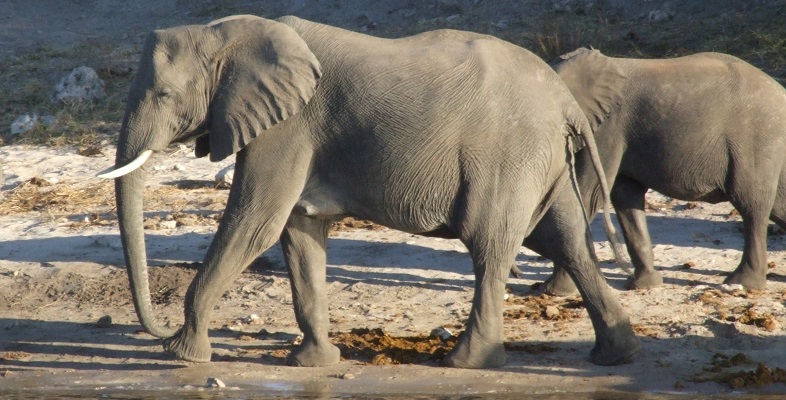6.4 Coping with heat
Not only are there mechanisms to generate extra heat, but there are cooling mechanisms too, of which sweating is just one example.
Activity 4
Watch this video clip and briefly note the behavioural responses shown by red kangaroos struggling with hot, dry conditions.
Make sure you open this link in a new tab or window, so you can easily return to this page.
https://www.youtube.com/ watch?v=bbaX1yeSatQ [Tip: hold Ctrl and click a link to open it in a new tab. (Hide tip)]
Answer
They seek shade and spread saliva onto the forelimbs.
Spreading saliva onto the forelimbs achieves much the same effect as sweating; the evaporation of the fluid requires heat that comes from the skin surface. The effect is to cool the skin and the blood flowing through adjacent vessels. The flow of blood through and near the skin (i.e. the peripheral circulation) often increases, thereby augmenting the effect.
Behaviour plays an important part in promoting heat loss amongst animals that live in hot, dry environments. As you’ve just seen, shade seeking is one familiar example; wallowing in cooling mud is another. Echidnas live in some of the hottest environments on Earth, with temperatures often approaching 40 °C, and appropriate behaviour is crucial to their survival. No laboratory measurements (as seen in Figure 19) could do justice to the subtle and diverse ways in which these animals cope with heat or cold ‘in the field’. In the past, largely on the basis of laboratory studies, echidnas were thought to lack any physiological cooling mechanism. For them, a body temperature of above 38 °C is fatal, because it is at least 6 °C above their normal body temperature. In hot weather, echidnas become entirely nocturnal. They spend their days in caves or burrows, where temperatures are significantly cooler than outside, so their bodies can lose heat to their surroundings. But they also rest in hollowed-out logs where the inside temperature is seldom lower than that outside. The fact that body temperatures appear to stay reasonably constant (seldom more than 35 °C) in such very hot conditions suggests that echidnas may indeed have some physiological means of adjusting temperature, which may well include increasing peripheral circulation. Remaining inactive in such conditions helps reduce the amount of heat the animal produces internally. But echidnas may go one step further and actively reduce their rate of metabolism, entering a profoundly inactive state called torpor. Much the same device is used by echidnas to cope with cold conditions, though here their prolonged inactivity (two to three weeks) and their highly suppressed metabolism (20% of the normal resting value) is more like true hibernation, with Tb as low as 5 °C.
These findings have come from close observation in the field and, if confirmed by other scientists, they would be further evidence that echidnas are not at all primitive and physiologically inept; they have sophisticated control mechanisms in place. Much the same is true of marsupials, though they generally have a lower Tb and BMR than the placental mammals do. But far from being a primitive feature, this subtle metabolic adaptation may reduce the food requirement and ensure that food reserves last for longer during adverse conditions.
